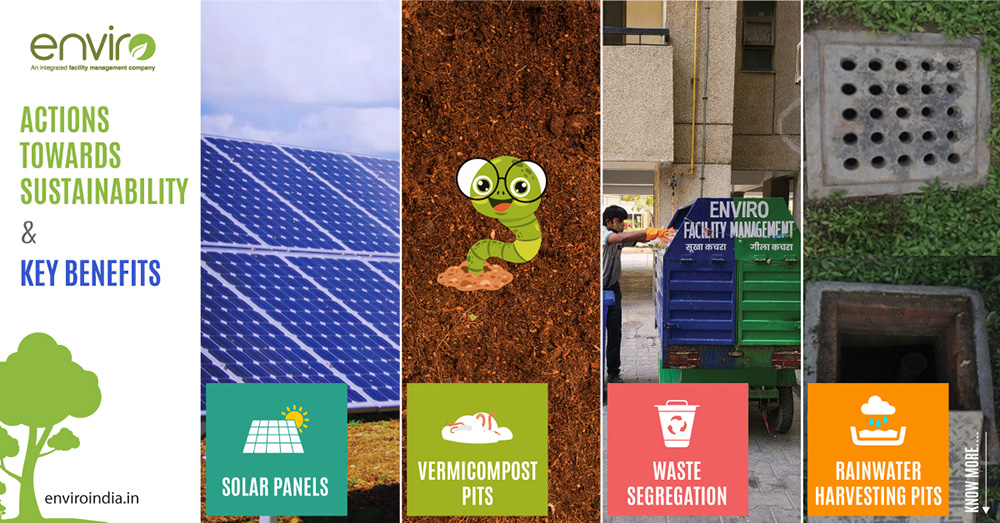The world is changing rapidly and sustainability has become a critical concern for individuals, businesses, and governments. As a Facility Manager, implementing Sustainable Facilities Management practices can help reduce energy consumption, decrease carbon footprint and create a positive brand image. Here, we will discuss how sustainable facilities management can help to achieve long-term energy efficiency and positive brand image.
A) Reduced Carbon Footprint:
Sustainable facilities management helps reduce the carbon footprint of buildings and facilities. An effective and sustainable facility management policy closely monitors energy waste and puts measures in place for reducing energy usage. These measures can include performing an energy audit, installing solar panels, using LED lights or compact fluorescent light bulbs, revamping buildings, adopting green building practices and running assets only when required. By reducing energy usage, Facility Managers can decrease carbon emissions and help protect the environment.
B) Cost Savings:
Sustainability brings financial benefits to buildings. Renewable energy resources used for green buildings are more affordable than fossil fuels, allowing facility managers to pay back upfront costs quickly. Green buildings are also valued higher than traditional ones, making them an excellent return on investment. Smart technology, such as occupancy sensors, motion sensors and ventilation systems can yield significant savings on electricity bills. Investing in telemetry systems to identify leaks can also help mitigate water consumption.
C) Waste Reduction:
Eco-friendly and sustainable facility management practices help reduce waste and water usage. Facility Managers can implement several strategies for reducing waste output such as vermicompost pits, rainwater harvesting pits and sensor-based low-flow aerators. Waste Management awareness programs can educate employees, clients and residents on the importance of waste management which ultimately helps in keeping the environment clean.
D) Conducive Work Environment:
Sustainability in buildings ensure high air quality, security and water standards. All these contribute to creating a comfortable working environment for employees, leading to increased productivity and benefits for the business. Employees want to work for a company that demonstrates corporate social responsibility and sustainable practices, making it easier for organizations committed to going green to recruit top talent and hold on to existing staff. Sustainability also increases the productivity of the employees and assets, reduces absenteeism and attracts good talent.
E) Enhanced Brand Reputation:
Reducing an organization’s impact on the environment is both a morally right thing to do and good business sense. Consistently good environmental performance can help boost brand reputation by demonstrating to clients, customers and employees that the organization cares about the planet. Sustainable facilities management ensures that organizations have a minimal, neutral, or even positive impact on the environment.
Conclusion:
Sustainable Facilities Management is no longer just a trendy word, it’s the need of the hour and is here to stay. Facility managers can implement sustainable practices to reduce energy consumption, decrease carbon footprint and create a positive brand image. Going Green and switching to Sustainable Facilities Management reduces the negative impact of the facilities on environment which not only benefits the planet but also yield positive outcomes in the long-run. Sustainable facilities management is a long journey, but by taking the right steps, Facility Managers can lead organizations on the way to a greener, healthier and more sustainable future.





 WhatsApp Business +91 88000 09776
WhatsApp Business +91 88000 09776
 CSC
CSC  WhatsApp Business
WhatsApp Business 